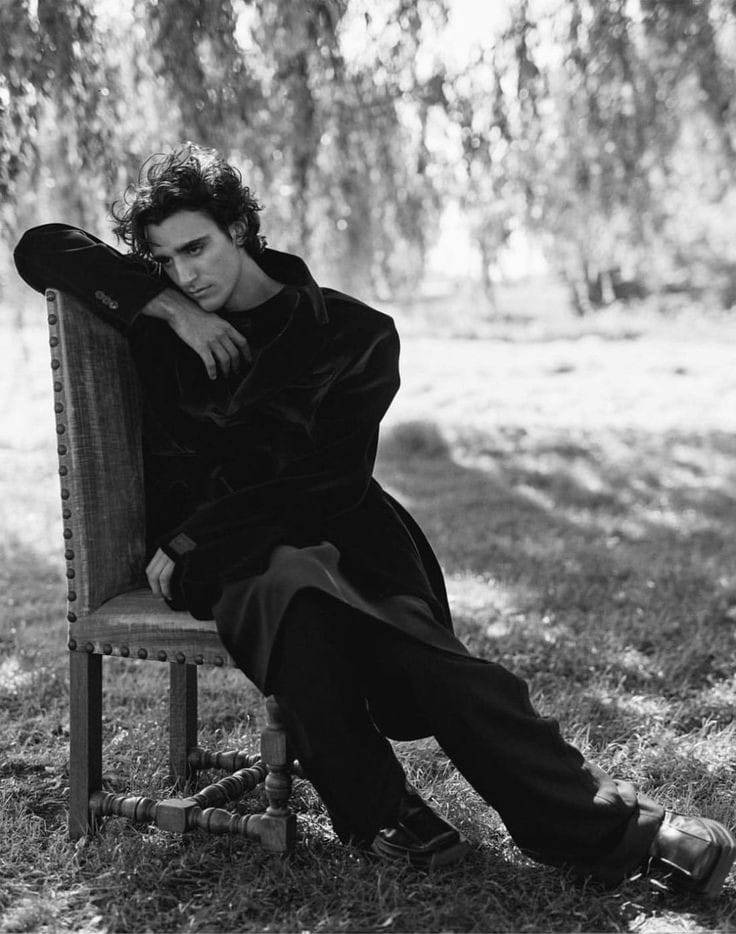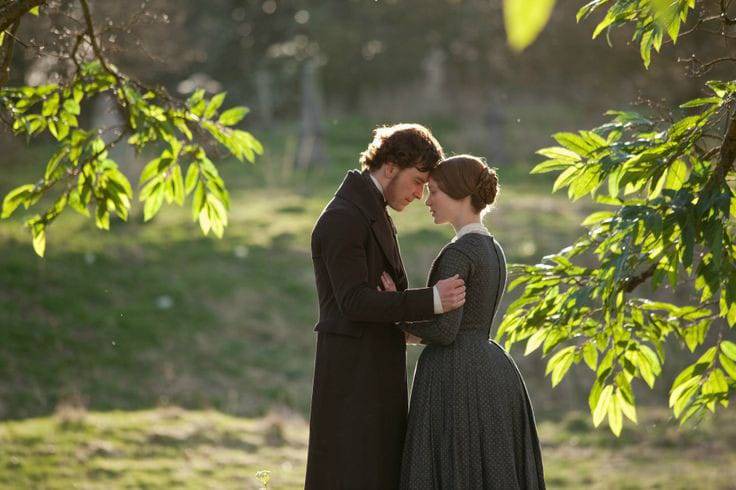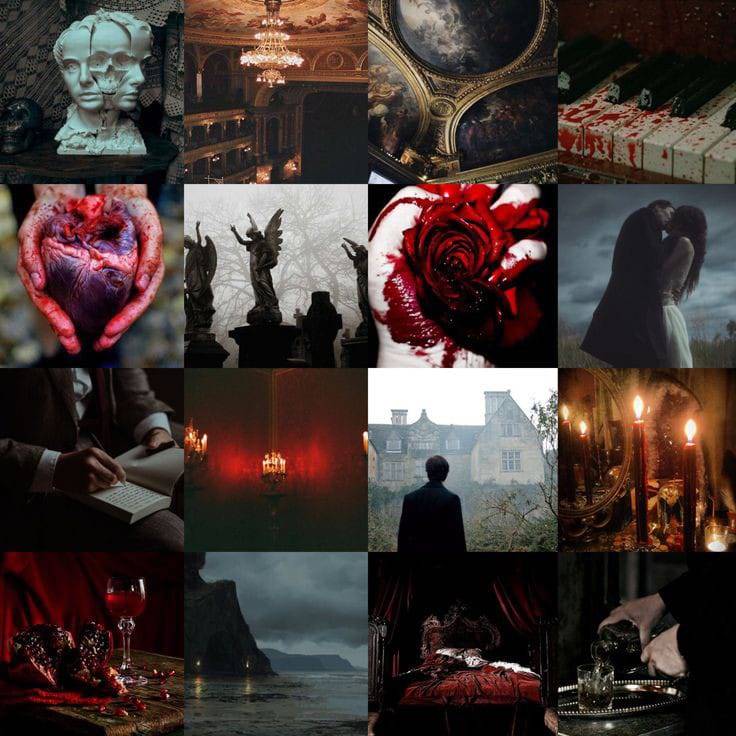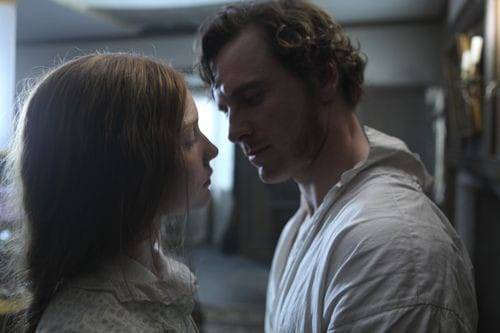The Byronic hero stands as one of the most lasting and intriguing archetypes in literature, particularly within the Gothic romance genre. Starting from the works and persona of the 19th-century poet Lord Byron, this archetype captures a brooding, dark, and complex male lead whose emotional depth and moral ambiguity resonate deeply with readers. The Byronic hero’s pulling nature and chaptic inner life make him a core figure in Gothic narratives, providing a view through which themes of love, redemption, and the human condition are searched for.
The Byronic hero is typically characterized by a combination of traits that set him apart from traditional romantic or heroic figures.
He is often deeply introspective, plagued by melancholy, and haunted by a sense of doom or fatalism. His internal struggles are central to his character, making him emotionally complex and compelling.
Frequently an outsider, the Byronic hero exists on the outskirts of society. His detachment from others starts from a great sense of alienation, whether due to personal guilt, societal rejection, or self-imposed hurt or stress or even an event in childhood that still hurts him.
Unlike traditional heroes, the Byronic hero is often well-educated, articulate, and culturally refined. This intellectual depth adds a layer of mystery and appeal to his character.
He exhibits a strong sense of individualism and defiance against societal norms and conventions. This rebellious streak underscores his complexity.
Central to the Byronic hero’s narrative is a hidden past filled with dark secrets and a great sense of guilt. This burden shapes his actions and relationships, adding a tragic dimension to his character.
The origins of the Byronic hero are closely tied to the life and works of Lord Byron himself. Byron’s own personality and chaotic life provided the blueprint for this archetype.
Childe Harold, for instance, is a world-weary traveler who seeks meaning in a life filled with indulgence and disillusionment. Similarly, Manfred is a tormented figure dealing with profound guilt and seeking redemption. These characters, imbued with Byron’s own experiences and existential musings, laid the foundation for the Byronic hero.
As the Gothic romance genre developed, the Byronic hero became a cornerstone, influencing countless literary works. This archetype’s appeal can be seen in more famous characters too such as Emily Brontë’s Heathcliff in “Wuthering Heights” and Charlotte Brontë’s Mr. Rochester in “Jane Eyre.”
Heathcliff, perhaps one of the most iconic Byronic heroes, embodies intense passion, revenge, and moral vagueness. His love for Catherine Earnshaw is both his greatest strength and his most profound weakness, driving much of the novel’s dramatic tension. Heathcliff’s past, his rise  from an orphan to a wealthy, yet vengeful landowner, and his ultimate passing underscore the tragic elements that define the Byronic hero.
from an orphan to a wealthy, yet vengeful landowner, and his ultimate passing underscore the tragic elements that define the Byronic hero.
Mr. Rochester, on the other hand, is marked by his hidden past and the secret of his mad wife, Bertha Mason. His complex relationship with Jane Eyre, fraught with deceit, redemption, and passionate love, highlights his multifaceted nature. Rochester’s journey from a brooding, secretive figure to a humbled, repentant man shows the potential within the Byronic hero archetype.
The Byronic hero’s lasting appeal lies in his multifaceted and deeply human characteristics. Unlike conventional heroes, the Byronic hero’s flaws and inner conflicts make him relatable and fascinating. Readers are drawn to his emotional depth, intellectual sophistication, and the constant tension between his darker impulses and his potential for redemption.
The hero’s defiance of conventional morality and his different ethical stance challenge readers to question the nature of good and evil. This moral questioning adds layers to the narrative, making the story more engaging and thought-provoking.
The intense, often doomed romances of Byronic heroes appeal to the reader’s sense of drama and tragedy. The hero’s passionate love affairs, marked by obstacles and personal flaws, create an appealing narrative of love and loss.
The mysterious nature of the Byronic hero, often drowned in secrets and hush businesses, intrigues readers. His unpredictability and the sense of danger associated with him add excitement and suspense to the story.
The Byronic hero’s rebellion against societal norms and his search for individualism resonate with readers who appreciate characters that challenge the status quo. This rebellion gives a timeless appeal to those who value personal freedom and authenticity.
With his complex personality and allure,
the Byronic hero significantly enhances the depth and appeal of a book, particularly within the Gothic romance genre. His presence introduces a plethora of elements that invigorate the narrative and captivate readers.
His struggles with guilt, redemption, and identity create a rich emotional imagery. This emotional intensity engages readers on a deeper level, rooting empathy and keeping them invested in the character’s journey.
For instance, Heathcliff in “Wuthering Heights” brings a whole sense of passion and despair, his unrequited love and subsequent vengeance driving much of the novel’s dramatic tension. His complex emotions make the narrative more gripping and emotionally resonant.
They are often morally ambiguous, blurring the lines between hero and villain. This moral complexity adds intrigue and unpredictability to the plot. Readers are forced to question the nature of right and wrong, as they witness the hero’s actions and motivations.
Characters like Mr. Rochester in “Jane Eyre” illustrate this well. His concealment of his marriage to Bertha Mason raises ethical dilemmas and challenges the reader’s perception of morality and justice. This ambiguity keeps readers engaged, as they struggle with their own judgments and sympathies.
The hero’s intense and often tricky romantic relationships inject a powerful dynamic into the narrative. His passionate and sometimes destructive love affairs are filled with obstacles and dramatic turns, enhancing the romantic tension and drama in the story.
In Charlotte Brontë’s “Jane Eyre,” Mr. Rochester’s complex relationship with Jane is marked by secrets, power struggles, and deep emotional connection. This tension not only drives the plot forward but also adds a layer of excitement and anticipation for readers.
Byronic heroes often bring a darker, more atmospheric tone to the narrative. Their brooding presence and personal struggles contribute to the Gothic elements of the story, such as foreboding settings, a sense of mystery, and a melancholic mood.
For example, the isolated, windswept moors of “Wuthering Heights” mirror Heathcliff’s cyclonic inner life, creating an atmosphere that is both haunting and captivating. This synergy between character and setting enhances the overall mood and immerses readers in the Gothic ambiance.
His introspection and psychological complexity provide a deep well of character development. His internal conflicts and existential musings add intellectual depth to the narrative, encouraging readers to delve into the character’s psyche and explore broader philosophical questions.
Characters like Lord Byron’s own Manfred from the poem “Manfred” shows this psychological depth. Manfred’s existential crisis and search for forgiveness add layers of meaning to the narrative, making it not just a story of events, but a profound exploration of the human condition.
The hero introduces prolific conflict and drama into the story. His rebellious nature and the no towards societal norms create tension with other characters and the broader society. This conflict drives the plot and keeps readers engaged with the unfolding drama.
In “Jane Eyre,” Mr. Rochester’s unconventional behavior and mysterious past create constant tension and conflict, both with Jane and within the broader social context of the novel. This drama is essential to the novel’s enduring appeal and keeps readers on the edge of their seats.
Also the Byronic hero’s unpredictability adds an element of suspense to the narrative. His actions and decisions are often driven by his complex emotions and personal demons, making it difficult for readers to predict what he will do next. This unpredictability keeps readers hooked, as they guess the hero’s next move and its consequences.
Heathcliff’s unpredictable behavior in “Wuthering Heights” adds to the novel’s suspense. His actions, driven by his intense emotions and desire for revenge, create a sense of uncertainty that keeps readers engaged.
The dynamics between a Byronic hero and the female lead in a romance setting is a great and compelling aspect of Gothic literature. This relationship is characterized by intense emotions, complex power dynamics, and significant personal growth.
The Byronic hero’s initial interaction with the female lead often involves a mix of fascination and mystery. His enigmatic and brooding demeanor piques the interest of the female lead, drawing her into his orbit. This attraction is often laced with a sense of danger and intrigue, making the relationship both exciting and precarious.
For example, in “Jane Eyre,” Jane is drawn to Mr. Rochester’s mysterious nature and the aura of secrets surrounding him. Despite his brute and sometimes harsh demeanor, she senses a depth of character that intrigues her.
The romance between a Byronic hero and the female lead is marked by high emotional stakes and intense passion. The Byronic hero’s inner turmoil and passionate nature fuel a relationship that is deeply emotional and often intense. This chemistry creates a strong, sometimes overwhelming bond between the characters.
In “Wuthering Heights,” the relationship between Heathcliff and Catherine Earnshaw is characterized by a profound and almost destructive passion. Their love is intense and all-consuming, driving much of the novel’s drama and conflict.
The interaction often involves complex power dynamics. Initially, the Byronic hero may appear dominant due to his confidence, experience, and social status. However, the female lead frequently challenges this dynamic, asserting her own strength and independence. This struggle for equality can lead to significant character development and mutual respect.
In “Jane Eyre,” Jane insists on being treated as Mr. Rochester’s equal, despite the differences in their social standing and life experiences. Her refusal earns his respect and deepens their emotional connection.
Conflict is an important core element in the relationship between a Byronic hero and the female lead. The hero’s secretive nature and troubled past often lead to misunderstandings and conflicts. These conflicts are crucial in developing the plot and deepening the characters’ relationship, as they navigate the challenges posed by the hero’s flaws and the heroine’s responses.
Mr. Rochester’s hidden marriage to Bertha Mason creates significant conflict with Jane Eyre. This revelation tests their relationship, forcing both characters to confront their values and desires.
The female lead often plays a key role in the Byronic hero’s journey towards redemption and self-discovery. Through her influence, the hero confronts his inner demons and seeks to overcome his flaws. This transformation process is a very important aspect of their romantic interaction, highlighting themes of growth and redemption.
In “Jane Eyre,” Jane’s steady morality and compassion influence Mr. Rochester’s transformation. By the end of the novel, he is a changed man, humbled and more self-aware, ready for a genuine and equal partnership with Jane.
Despite the initial power imbalances and conflicts, the relationship between a hero and the female lead often turns into one of mutual respect and admiration. The hero’s appreciation for the heroine’s strength, intelligence, and integrity grows over time, leading to a more balanced and reciprocal relationship.
In “Pride and Prejudice” (even though Mr. Darcy is not a traditional Byronic hero, he shares some characteristics), Darcy’s respect for Elizabeth Bennet’s wit and independence transforms his initial pride into genuine admiration and love.
The Byronic hero’s sense of isolation is a profound theme in his interactions with the female lead. The heroine often acts as a bridge, helping the hero connect with others and the world around him. This is essential for the hero’s emotional healing and personal growth.
Heathcliff’s interactions with Catherine and later with young Cathy in “Wuthering Heights” highlight his struggle with isolation and his desperate need for connection, which he ultimately fails to achieve fully, adding to the novel’s tragic dimension.
Byronic heroes in romance attract readers with their intense emotions and mysterious, flawed personalities. Their deep passion and complex relationships with the female lead add excitement and depth to the story. These characters make the plot more engaging and the romance more memorable.



